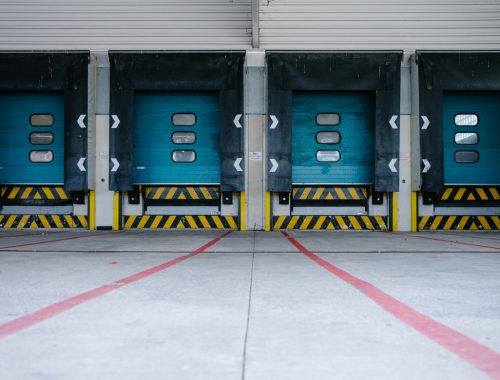
Everything You Should Know About Freight Lifts
What Is Special Equipment (Secondary Equipment)?
According to the State Council’s Regulations on Safety Supervision of Special Equipment, “special equipment” includes boilers, pressure vessels (including gas cylinders, see below), pressure pipelines, elevators, lifting appliances, passenger ropeways, large amusement devices, and non-road vehicles that are related to human life safety or pose a high risk. When manufacturing freight lifts, our staff follow the rules of these Regulations as well as the requirements of the safety technical regulations developed and published by the State Council’s department of safety monitoring and administration of special equipment.
These Regulations also state that a unit producing special equipment is responsible for the safety performance and energy efficiency index of the special equipment it produces, and that it will not produce any special equipment that does not meet the safety performance or energy efficiency index requirements, or any special equipment that has been declared obsolete by national industrial policies. Many organizations, which rely on the hard work of both employees and management, place a high importance on maintaining a safe and healthy working environment. The incidence of workplace mishaps is considerably decreased when safety procedures and rules are in place and everyone is working together to limit risk.
We manufacture freight lifts in strict compliance with safety requirements and supply personnel with enough safety equipment to ensure that they operate in a safe and healthy environment. Lift, on average, performs staff education and training once a month and educates employees of our working method and matters requiring attention every morning before they begin work, allowing us to assure employee safety and provide high-quality cargo lift.
 Work-related Accidents in Workplace
Work-related Accidents in Workplace
According to a research done by the United States Bureau of Labor Statistics in 2019, roughly 3 million persons were injured at work in the United States in 2019. In the same year, 5,200 employees died as a result of work-related incidents. Employee safety at work is extremely important, and employers should verify that their company follows the Occupational Safety and Health Administration’s essential requirements (OSHA). Lifting large objects is one of the most common causes of job injury. Manually moving goods can result in strains and sprains as a result of inappropriate lifting or carrying of loads that are either too large or too heavy. Back sprains, muscle pulls, wrist injuries, elbow injuries, spinal injuries, and other injuries caused by lifting large objects are less likely to occur when personnel use hydraulic lifting equipment.
Our freight lifts are designed and manufactured in accordance with national standards. Our inspection and testing department will keep a close eye on the manufacturing process and inspect the finished items against our checklist. Unqualified parts or goods will be detected by metal detectors, which will alert employees to the defects, preventing inspections from being missed. The defective parts or unqualified items will then be trashed or fixed, depending on the severity of the problem.
We will carry out a series of testing and commissioning items to assess the performance of the freight lift and detect any problems on the finished products in order to ensure normal functioning of the freight lift after manufacturing.
Testing & Commissioning Procedures Objectives
The T & C processes have the following goals:
a) to ensure that the equipment is in working order after it has been manufactured;
b) to use a series of tests and adjustments to ensure that the finished goods’ performance matches the specified design intent; and
c) to gather and record overall production performance data as a baseline for future operation and maintenance.
The Director will keep track of all of the test findings in the proper test record forms for future reference.
As a result, our finished items will meet the factory’s requirements.
Freight Lift Testing and Commissioning Procedures
After manufacture, we normally examine and execute functional performance testing on the freight lift using the following procedures:
a) Scratches or cracks
(b)Hydraulic system
c) Safety equipment and excessive speed governor
d) The freight lift’s control station
e) System of automatic control
f) The rate at which the weight is lifted
g) Noise level
Freight Lift Maintenance
Workmanship
a) Repairs and replacements shall be completed in a professional way. During operations such as torquing, drilling, cutting, and welding, care will be given to ensure that no component of the assembly is destroyed or weakened, compromising the equipment’s safe operation. Within the manufacturer’s design tolerances, rotating parts will be properly aligned.
b) When maintenance procedures specify that a certain part or device be examined, it means that the part or device must be verified to ensure that it is performing and adjusting according to specifications.
c) Any part or device found to be out of specification will be fixed, replaced, or corrected as soon as possible;
d) A full fire extinguisher is installed in the workplace to prevent accidents when using flammable lubricants. For any cutting, welding, or grinding operations, personnel must get a Hot Work Permit.
e) If a defective part or function is discovered during routine maintenance checks, tests, or examinations, it will be modified, repaired, or replaced as soon as possible;
Lubrication
a) A lubricant’s major functions are to:
Reduce the amount of friction
Preventing wear and tear
Corrosion protection for the equipment
Temperature control (dissipate heat)
Containment should be avoided (carry contaminants to a filter or sump)
Power is transmitted (hydraulics)
Make a fluid seal.
b) Issues that need to be addressed during lubricating
1) Lubricate parts of lifting equipment that require it at intervals no less than those advised by the manufacturer. Excessive amounts of anything should be avoided;
2) Rust-preventative substances, such as paint, lubricants, graphite or oil, or similar coatings, must be used only if the manufacturer recommends it;
3) Only lifts with lubrication-required guiding members must have their guide rails oiled. Excessive amounts must be prevented, and mechanisms for collecting the lubricant must be provided at the rail’s base.
This is everything you need to know about the hydraulic freight lift; if you’re interested in lift spare parts, go here and learn more! 🙂
You May Also Like

10 College Essay Writing Tips
April 11, 2023
Pros And Cons About Cavapoo Dog That Will Help You Understand This Dog Breed
July 22, 2020

